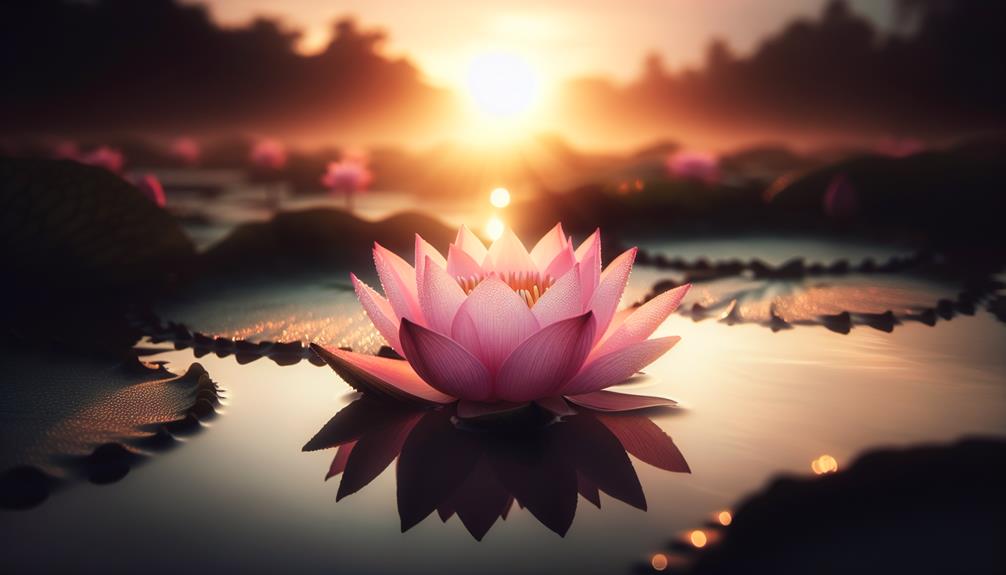What Is Kama According To Hinduism
Kama, a concept deeply rooted in Hindu philosophy, goes beyond mere physical desire. In Hinduism, Kama is viewed as an essential part of human existence, representing not just romantic or sexual love, but also the pursuit of aesthetic pleasures and enjoyment in life.
What Is Kama According To Hinduism
Understanding the significance of Kama in Hindu scriptures sheds light on its multifaceted nature and its role in shaping human experiences. Exploring how Kama intersects with spiritual growth and the broader goals of life provides a fascinating insight into the complexity and depth of this fundamental concept in Hindu thought.
What Is Kama According To Hinduism
Key Takeaways
- Kama in Hinduism embodies human emotions and aesthetic enjoyment.
- It serves as a driving force, providing emotional fulfillment and enriching life experiences.
- Kama fosters spiritual growth, utilizing desires for enlightenment and elevating consciousness.
- Balancing Kama with other goals involves prioritizing essential desires, self-awareness, moderation, and alignment with values.
Origins and Meaning of Kama
Rooted deeply in Hindu philosophy, the concept of Kama encompasses more than mere desire or pleasure, serving as a profound representation of human emotions and aspirations. In Hinduism, Kama is believed to be one of the four goals of human life, known as the Purusharthas, which also include Dharma (duty/righteousness), Artha (wealth/prosperity), and Moksha (liberation). Kama is often interpreted as the pursuit of aesthetic enjoyment and emotional fulfillment, emphasizing the importance of experiencing love, pleasure, and beauty in life.
What Is Kama According To Hinduism
Within the framework of Hindu thought, Kama is viewed as a natural and essential part of human existence, influencing not only romantic relationships but also artistic expression, social interactions, and spiritual growth. It is considered a driving force that motivates individuals to seek connection, creativity, and happiness. Moreover, Kama is seen as a catalyst for personal growth and self-discovery, helping individuals understand their desires, passions, and values. By embracing Kama in a balanced and ethical manner, individuals can cultivate a sense of fulfillment and harmony in their lives.
What Is Kama According To Hinduism
Kama in Hindu Scriptures
Kama, as depicted in Hindu scriptures, plays a significant role in shaping the ethical and spiritual dimensions of human existence. In Hinduism, Kama is not merely about physical desire but encompasses the broader concept of longing, pleasure, and emotional fulfillment. Let's explore some key aspects of Kama in Hindu scriptures through the following table:
What Is Kama According To Hinduism
| Scripture | Description | Significance |
|---|---|---|
| Rigveda | Mentions Kama as a fundamental human desire. | Emphasizes the importance of desire in human life. |
| Bhagavad Gita | Discusses how desires can lead to suffering if not controlled. | Highlights the need for moderation in pursuing desires. |
| Kama Sutra | Provides insights into the art of love, relationships, and sensual pleasures. | Offers guidance on how to fulfill desires in a balanced way. |
| Manusmriti | Outlines the ethical principles related to desires and relationships. | Establishes rules for ethical conduct in fulfilling desires. |
| Upanishads | Contemplate on transcending desires to attain spiritual liberation. | Explores the connection between desires and spiritual growth. |
These scriptures collectively present a nuanced understanding of Kama, guiding individuals on how to navigate desires in a way that aligns with ethical and spiritual values.
What Is Kama According To Hinduism
The Role of Kama in Life
Exploring the intricate interplay of desires and human experiences unveils the multifaceted role that Kama plays in shaping individual lives within the context of Hindu philosophical teachings. Kama, as a concept, holds significant importance in the daily lives of individuals, guiding actions, relationships, and emotional experiences.
What Is Kama According To Hinduism
Here are five key aspects that highlight the role of Kama in life:
- Driving Force: Kama serves as a driving force that motivates individuals to pursue their desires and aspirations.
- Emotional Fulfillment: It plays a crucial role in providing emotional fulfillment and fostering connections with others.
- Balancing Act: Kama helps individuals strike a balance between material desires and spiritual growth.
- Sense of Belonging: It nurtures a sense of belonging by encouraging individuals to form meaningful relationships with others.
- Life Enrichment: Kama enriches life experiences by adding depth, passion, and purpose to everyday activities.
Kama and Spiritual Growth
Kama's role in fostering spiritual growth within the framework of Hindu philosophy underscores its significance as a transformative force in guiding individuals towards higher consciousness and inner realization. In Hinduism, kama is not just about fulfilling desires but also about using those desires as a means to attain spiritual enlightenment. When approached with mindfulness and an understanding of its deeper implications, kama can serve as a stepping stone towards self-discovery and connection with the divine. By embracing kama in a balanced and virtuous manner, individuals can learn valuable lessons about themselves, their relationships, and their place in the universe.
Spiritual growth through kama involves recognizing the interconnectedness of all beings and understanding that the pursuit of pleasure should not come at the expense of others or oneself. It requires cultivating compassion, empathy, and self-awareness, which are essential qualities on the path to enlightenment. Through the practice of kama in alignment with dharma and other Hindu principles, individuals can elevate their consciousness, expand their hearts, and ultimately experience a deeper sense of fulfillment and purpose in life.
Balancing Kama With Other Goals
In the pursuit of holistic spiritual development, individuals must navigate the intricate balance between the fulfillment of desires symbolized by kama and the pursuit of other essential life goals. Achieving this equilibrium is crucial for leading a fulfilling and meaningful life.
Here are five key considerations to help individuals effectively balance kama with other goals:
- Prioritization: Understanding which desires are essential for personal growth and which may hinder progress is vital.
- Self-awareness: Being mindful of one's desires and motivations can aid in aligning them with long-term goals.
- Moderation: Practicing moderation in fulfilling desires can prevent imbalance and promote overall well-being.
- Values alignment: Ensuring that desires are in harmony with one's values and beliefs can lead to a more purposeful existence.
- Seeking guidance: Seeking advice from mentors or spiritual leaders can provide valuable insights on balancing kama with other aspects of life.
Frequently Asked Questions
How Does the Concept of Kama in Hinduism Differ From Western Notions of Love and Desire?
The concept of kama in Hinduism diverges from Western notions of love and desire by encompassing a broader spectrum of human emotions and experiences.
In Hinduism, kama embodies not only physical and romantic love but also spiritual and aesthetic pursuits. It is regarded as one of the four goals of human life, emphasizing the importance of balancing desires with duty and righteousness to achieve a harmonious existence.
Are There Specific Rituals or Practices in Hinduism That Are Dedicated to Honoring Kama?
There are specific rituals and practices in Hinduism that are dedicated to honoring Kama, the concept of love and desire.
For example, the festival of Holi is a celebration that includes rituals symbolizing the playful and joyful aspects of Kama.
During Holi, people come together to spread love and happiness through vibrant colors, music, and dance, celebrating the beauty of relationships and connections in life.
Can Kama Be Seen as a Form of Meditation or Spiritual Practice in Hinduism?
In Hinduism, kama can indeed be viewed as a form of meditation or spiritual practice. By cultivating desires in a conscious and controlled manner, individuals can learn to understand their innermost urges and emotions. This introspective process can lead to self-awareness and personal growth.
Through the lens of Hinduism, embracing kama as a spiritual practice can help individuals navigate their desires in a mindful and purposeful manner.
How Do Different Sects or Schools of Hinduism Interpret and Prioritize the Concept of Kama?
Different sects and schools of Hinduism interpret and prioritize the concept of Kama differently.
Some may view Kama as an essential aspect of human experience, leading to spiritual growth and fulfillment.
Others may emphasize restraint and control over desires to achieve higher spiritual goals.
The diversity of interpretations reflects the rich tapestry of beliefs within Hinduism, showcasing the complexity and depth of this ancient religion.
Are There Any Historical Figures or Myths in Hinduism That Embody the Ideal of Kama?
In Hinduism, historical figures and myths often embody the ideal of kama, representing love, desire, and pleasure.
These figures and stories serve as examples of how kama can be expressed in a sacred and virtuous manner.
Conclusion
In conclusion, Kama in Hinduism is a fundamental concept that encompasses desire, pleasure, and love. It plays a significant role in human life, guiding individuals towards spiritual growth while navigating the material world.
While balancing Kama with other goals is essential, one must contemplate: How can one find harmony between fulfilling desires and attaining spiritual enlightenment in the pursuit of a meaningful life?

